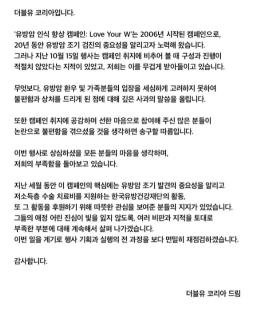Elderly people with hip fractures, low recovery rate of walking after surgery with cognitive decline and sarcopenia
Aug 06, 2025
According to a study by Professor Lim Jae-young of the Department of Rehabilitation Medicine at Seoul National University Bundang Hospital (Professor Lim Seung-kyu of the Department of Rehabilitation Medicine at Soonchunhyang University Cheonan Hospital), only 6 out of 10 patients (60.8%) with sarcopenia with cognitive decline can walk without the help of others a year after hip fracture surgery.
This is about 26% lower than patients with only sarcopenia (81.8%), suggesting that patients with cognitive decline and sarcopenia need more optimized rehabilitation treatments.
Hip fractures are a broken bone 'hip" between the pelvis and thighs that make the movement of the lower body, often accompanied by falls on the hip backward in older adults with low bone density. When the hip joint is fractured, it is difficult to walk normally, so the time spent lying down is longer, leading to fatal complications such as pressure ulcers, pneumonia, and heart disease, and is called a disease that is more scary than cancer in the elderly.
In the event of a hip joint fracture, surgery to replace broken bones with artificial joints and rehabilitation to restore walking function are performed, and factors such as age, muscle strength, cognitive function, and nutritional status vary from patient to patient, so the probability of recovering to normal walking varies greatly from individual to individual. Among them, muscle strength, in particular, is considered the most important variable in postoperative rehabilitation treatment because it directly affects walking.
The problem is that even though the number of elderly patients with complex diseases is increasing rapidly as they enter a super-aged society, most of the current rehabilitation treatments focus on muscle strength (muscle loss), which does not fully reflect other factors. Typically, cognitive decline is likely to occur with sarcopenia in the elderly, and once accompanied, it falls into a vicious cycle that worsens symptoms, hindering walking recovery, but the risk of the two diseases appearing together has not yet been objectively identified.
In response, the research team wanted to analyze how much the prognosis of walking deteriorates after a year if patients aged 65 or older who received rehabilitation treatment after hip fracture surgery suffer from cognitive decline and sarcopenia at the same time. A total of 114 patients were divided into four groups according to the presence or absence of cognitive decline and sarcopenia, and the walking recovery rate was followed up for 12 months.
It should be noted that all of the study subjects received the 'Korean type Integrated Fracture Rehabilitation Program (FIRM)' treatment developed by the research team, not general rehabilitation treatment. FIRM is a treatment that has increased the rate of walking recovery through a multidisciplinary approach by doctors, physical therapists, and occupational therapists, and has excellent effects on patients with sarcopenia. Therefore, if the recovery progress of patients with cognitive decline and sarcopenia is particularly bad even after receiving FIRM treatment, the condition accompanied by cognitive decline should be recognized as a high-risk factor.
As a result of the study, the walking recovery rate of the patient group with only sarcopenia was 81.8%, which was not much different compared to the patient group without both diseases (90.2%), but it was confirmed that the walking recovery rate sharply decreased to 60.8% when cognitive decline was accompanied. In addition, multivariate analysis to determine the association between disease and recovery rate also showed that cognitive decline reduces walking recovery rate by 45.8%, and decreases by 57% when cognitive decline and sarcopenia are present at the same time. This demonstrates the need for more enhanced rehabilitation therapy for patients with cognitive decline and sarcopenia.
This study is significant in that it has established a clinical basis for establishing a customized rehabilitation strategy optimized for patients by integrating the two factors in the walking recovery process after hip fracture surgery amid an increasing number of patients with cognitive decline and sarcopenia due to the aging trend.
Professor Lim Jae-young of the Department of Rehabilitation Medicine at Seoul National University Bundang Hospital said, `The elderly hip fracture is a disease with a high socioeconomic burden, such as a higher mortality rate and the need to be cared for by a regular caregiver as walking recovery is delayed after surgery,' adding, `This study will contribute to advancing the rehabilitation process by systematizing treatment plans for patients who suffer from cognitive decline and sarcopenia together and have great difficulty in walking recovery.'
Meanwhile, the results of this study were recently published in the international journal 『Journal of Gerontology Medical Sciences" in the field of gerontology.
This is about 26% lower than patients with only sarcopenia (81.8%), suggesting that patients with cognitive decline and sarcopenia need more optimized rehabilitation treatments.
Hip fractures are a broken bone 'hip" between the pelvis and thighs that make the movement of the lower body, often accompanied by falls on the hip backward in older adults with low bone density. When the hip joint is fractured, it is difficult to walk normally, so the time spent lying down is longer, leading to fatal complications such as pressure ulcers, pneumonia, and heart disease, and is called a disease that is more scary than cancer in the elderly.
In the event of a hip joint fracture, surgery to replace broken bones with artificial joints and rehabilitation to restore walking function are performed, and factors such as age, muscle strength, cognitive function, and nutritional status vary from patient to patient, so the probability of recovering to normal walking varies greatly from individual to individual. Among them, muscle strength, in particular, is considered the most important variable in postoperative rehabilitation treatment because it directly affects walking.
The problem is that even though the number of elderly patients with complex diseases is increasing rapidly as they enter a super-aged society, most of the current rehabilitation treatments focus on muscle strength (muscle loss), which does not fully reflect other factors. Typically, cognitive decline is likely to occur with sarcopenia in the elderly, and once accompanied, it falls into a vicious cycle that worsens symptoms, hindering walking recovery, but the risk of the two diseases appearing together has not yet been objectively identified.
In response, the research team wanted to analyze how much the prognosis of walking deteriorates after a year if patients aged 65 or older who received rehabilitation treatment after hip fracture surgery suffer from cognitive decline and sarcopenia at the same time. A total of 114 patients were divided into four groups according to the presence or absence of cognitive decline and sarcopenia, and the walking recovery rate was followed up for 12 months.
It should be noted that all of the study subjects received the 'Korean type Integrated Fracture Rehabilitation Program (FIRM)' treatment developed by the research team, not general rehabilitation treatment. FIRM is a treatment that has increased the rate of walking recovery through a multidisciplinary approach by doctors, physical therapists, and occupational therapists, and has excellent effects on patients with sarcopenia. Therefore, if the recovery progress of patients with cognitive decline and sarcopenia is particularly bad even after receiving FIRM treatment, the condition accompanied by cognitive decline should be recognized as a high-risk factor.
As a result of the study, the walking recovery rate of the patient group with only sarcopenia was 81.8%, which was not much different compared to the patient group without both diseases (90.2%), but it was confirmed that the walking recovery rate sharply decreased to 60.8% when cognitive decline was accompanied. In addition, multivariate analysis to determine the association between disease and recovery rate also showed that cognitive decline reduces walking recovery rate by 45.8%, and decreases by 57% when cognitive decline and sarcopenia are present at the same time. This demonstrates the need for more enhanced rehabilitation therapy for patients with cognitive decline and sarcopenia.
This study is significant in that it has established a clinical basis for establishing a customized rehabilitation strategy optimized for patients by integrating the two factors in the walking recovery process after hip fracture surgery amid an increasing number of patients with cognitive decline and sarcopenia due to the aging trend.
Professor Lim Jae-young of the Department of Rehabilitation Medicine at Seoul National University Bundang Hospital said, `The elderly hip fracture is a disease with a high socioeconomic burden, such as a higher mortality rate and the need to be cared for by a regular caregiver as walking recovery is delayed after surgery,' adding, `This study will contribute to advancing the rehabilitation process by systematizing treatment plans for patients who suffer from cognitive decline and sarcopenia together and have great difficulty in walking recovery.'
Meanwhile, the results of this study were recently published in the international journal 『Journal of Gerontology Medical Sciences" in the field of gerontology.
|
This article was translated by Naver AI translator.














